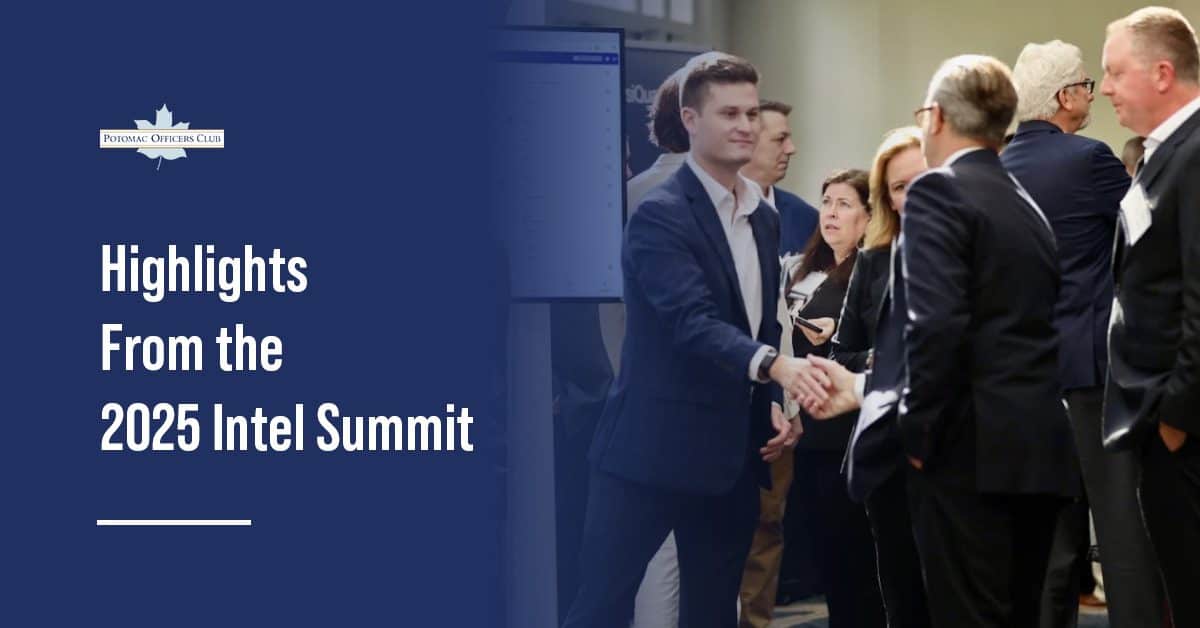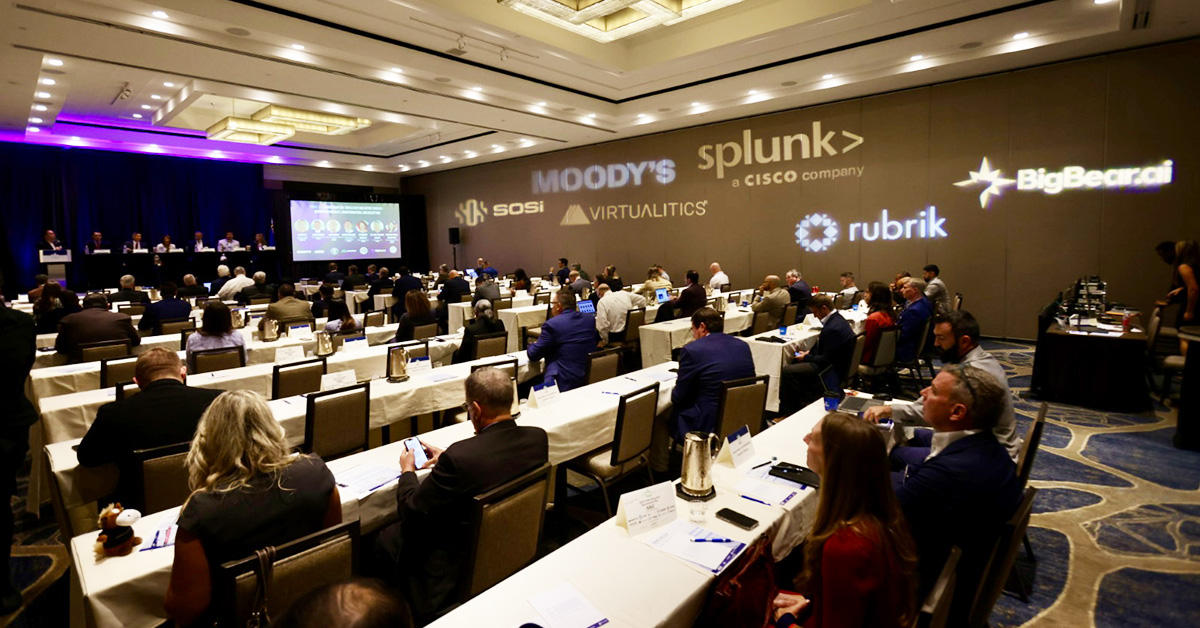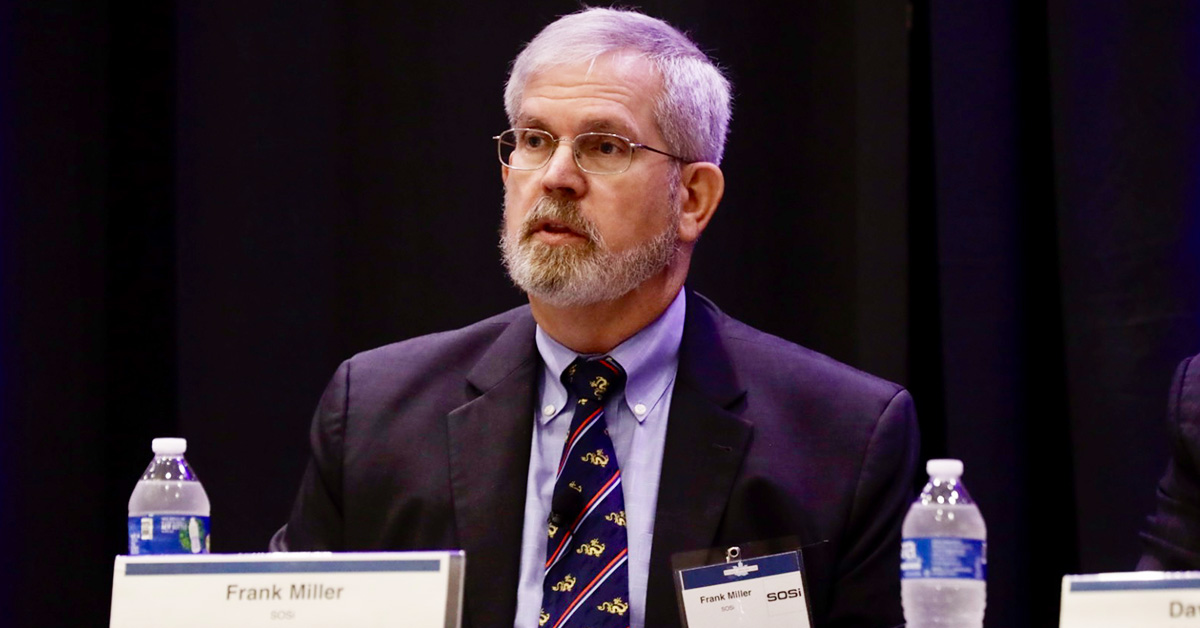
5 Key Takeaways From the 2025 Intel Summit
Co-authored by Pat Host
The 2025 Intel Summit, held Oct. 2 at the Hilton McLean in Tysons Corner, Virginia, convened just as the U.S. government entered a shutdown. Despite the timing, the event drew a strong lineup of recently retired intelligence community leaders, innovative industry executives and national lab experts who came together to explore how technologies like artificial intelligence, zero trust and quantum computing are reshaping the IC’s mission and operational edge.
Potomac Officers Club’s next event is an especially exciting one: the 2025 Homeland Security Summit comes at a timely juncture, as hundreds of billions of dollars in One Big Beautiful Bill funding pours into DHS. And we have our keynote, Sec. Kristi Noem, to explain to us how the department is allocating its new resources. Don’t miss this essential Nov. 12 GovCon networking event!
We compiled the most important running themes from the event. All photos by Charles McClanahan.

Building Trust and Integrating AI Into Mission Workflows
The Enabling Intelligence Community Missions With Artificial Intelligence panel, moderated by Wash100 Award winner Jill Singer of AT&T, emphasized that successful AI adoption in government and intelligence environments hinges on trust and workflow alignment. Panelists from Exiger, UMD Applied Research Laboratory for Intelligence & Security and the Air Force highlighted that defining clear mission workflows and integrating AI tools into those processes is critical for demonstrating value and building confidence among users.
Human-machine teaming requires both stable operational environments and experimental sandboxes for testing new models. Panelists also noted that trust isn’t just technical—it involves clarifying responsibility and liability when AI outcomes go wrong, helping personnel feel secure in using AI in real mission contexts.

China Is Trying to Conquer the West
 China and its goal of conquering the West was a consistent topic at the 2025 Intel Summit. Multiple panelists and a keynote raised how China seeks to become the world’s economic force through a comprehensive intelligence and economic espionage program, such as stealing Tesla’s electric vehicle intellectual property, unlike anything previously experienced.
China and its goal of conquering the West was a consistent topic at the 2025 Intel Summit. Multiple panelists and a keynote raised how China seeks to become the world’s economic force through a comprehensive intelligence and economic espionage program, such as stealing Tesla’s electric vehicle intellectual property, unlike anything previously experienced.
David Shedd, former Defense Intelligence Agency acting director, discussed in detail how China steals IP from Western nations doing business in China, bolstering its economic forces while harming those of its adversaries.
“The Chinese spying machine of 20-30 years ago is not the same [as today]. It is a process that I have termed ‘catch, cage and kill,’” Shedd said. “What’s catch? Bring U.S. businesses onshore. It then catches their technology or IP. It then cages it and replicates it through a series of lawfare capabilities. Then it kills the competition from the U.S., or west more generally. It’s a sea change in the last 10-15 years, building off a history of spying that has long been their force multiplier since joining the World Trade Organization [in 2001].”
Keynote speaker Mirriam-Grace MacIntyre, former executive director of the National Counterintelligence and Security Center and a senior partner of global geopolitical risk management at growth[period], said bluntly that China has become the greatest long-term threat to U.S. economic and national security. She also mentioned how China targets U.S. technology.
“It’s honestly probably not overstating it to say that we haven’t had a national security threat like China since the end of the Cold War and we’ve probably never had an economic competitor like that in the history of our nation,” MacIntyre said. “China, today, represents the broadest, most active persistent cyber espionage threat to the U.S. government and to private sector networks. They are [also] a top threat to U.S. tech competitiveness.”
A Counterpoint
Fortunately, it’s not time for the West to surrender to China. Another panelist, Andrew Baczewski, Sandia National Laboratory distinguished member of technical staff, said quantum computing is one technology where the U.S. is way ahead of China.
“There’s no shortage of times where I’ve read a paper from…one of the centers of gravity in China and said ‘oh, geez, I thought that six to seven years ago,’” Baczewski said. “There’s certainly a lot of money and effort there, but there doesn’t seem to be a whole lot of originality. Of course, this is just speaking to the technologies that I know, but, it’s clear that…the things that people are publishing [here are] being replicated over there.”
Companies Should Embed Geopolitics Into Their Core Business Strategy
In her keynote, Mirriam-Grace MacIntyre urged companies to integrate geopolitical foresight directly into strategic planning. She emphasized that understanding global dynamics must guide decisions on investments, partnerships, research and development, and supply chain design—rather than being siloed within security or policy functions.
This theme carried through to later discussions, including the lunch panel on safeguarding research and intellectual property amid strategic competition with China. Former DIA official Dennis Wilder warned that U.S. firms underestimate the insider threat from Chinese intelligence operations, underscoring the urgent need for employee education and vigilance in an era of pervasive information targeting.

China Adopts a Coercive Approach to Economic Espionage
Another consistent theme from the 2025 Intel Summit was how China’s espionage is no longer simply sending government spies to foreign countries to investigate their adversaries. Instead, China is now using a “whole of society” approach that not only compels Chinese citizens to report back to the government for work being done in China. It also requires Chinese nationals working on overseas programs tell the CCP what they are doing.
“[China has three laws that] are coercive in nature, not only forcing foreign companies to provide information on their technology and IP if they want to do business in China…but [also] algorithms, you must provide the algorithms,” said Frank Miller, a former DIA officer for East Asia and former SOSi / Exovera vice president for intelligence integration. “If you are doing business in China and there are Chinese nationals working in your company or on your research team, they are required to report what they are doing and learning to the state.”
China’s National Intelligence Law
One of the most chilling aspects of China’s coercive approach to economic espionage is how many people China ultimately compels to participate in it. More specifically, China’s National Intelligence Law, passed in 2017.
“It forces every Chinese national to cooperate with the Chinese Communist Party, every one of 1.4 billion people,” Miller said. “I would call this a ‘whole of society’ approach to spying in which anyone, at any time, can be called upon to support the CCP…No other adversary has done this ‘whole of society’ approach. The scope and breath is something—it is massive, pervasive and ubiquitous. It literally touches everything from our healthcare, to Monsanto seed development, to hypersonics. We need this to be a national security priority.”
China’s coercive approach to economic espionage makes it challenging for businesses to evaluate the trustworthiness of their potential Chinese business partners. Miller suggested the Department of Commerce’s Bureau of Industry and Security does a good job vetting entities or companies from overseas, including China, who want to purchase IP or technology from the U.S. But it is not enough.
“The problem is it’s only [BIS] and it’s only tech from the U.S. that is on the control list. It doesn’t look at research and development centers,” Miller said. “Our DOD labs and every university out there should be doing the same thing and I don’t believe that any of these organizations should be doing it for themselves. [We] need an external vendor to do this.”
Harnessing Commercial AI While Navigating Classified Systems
Commercial AI offers enormous potential for the intelligence community, but integrating these tools in classified environments presents unique challenges. During the Enabling Intelligence Community Missions With AI panel, participants pointed to issues such as infrastructure limitations, procurement bottlenecks, and the need to transfer or bring models to sensitive data rather than moving the data itself. Sandboxes and flexible contracting were highlighted as effective strategies to accelerate adoption. The discussion stressed leveraging private-sector R&D investment while maintaining transparency, security, and operational effectiveness in high-side environments.
The 2025 Homeland Security Summit will feature six panels laser-focused on different ways AI can assist and enable domestic resilience efforts. Register now to hear from representatives from Customs and Border Protection, CISA, ICE, the DHS Cyber Crimes Center, as well as a keynote from Sec. Kristi Noem herself. Register today!
Integrating Commercial Agility Into Mission Workflows
At the Accelerating Intelligence Transformation: Integrating Commercial Innovation for a Dynamic Threat Environment panel, moderated by SAIC’s Jillian Gallaher and featuring leaders from SAP NS2, SOSi and Virtualitics, participants emphasized that successfully accelerating intelligence transformation depends on blending commercial agility with mission discipline. Rather than chasing every new AI release, agencies should focus on integrating proven technologies into well-defined workflows and building environments that allow for both stable operations and safe experimentation.
Trust, Transparency and Faster Adoption
Accelerating Intelligence Transformation panelists agreed that trust remains the linchpin of AI adoption—analysts and leaders need transparency into how AI tools are trained, what data they use and how decisions are made. They also underscored the need for faster, more flexible contracting and sandbox testing to bring commercial innovations securely into classified environments. Without procurement reform and closer industry collaboration, the intelligence community risks falling behind adversaries that are already moving at commercial speed.

Category: Articles





